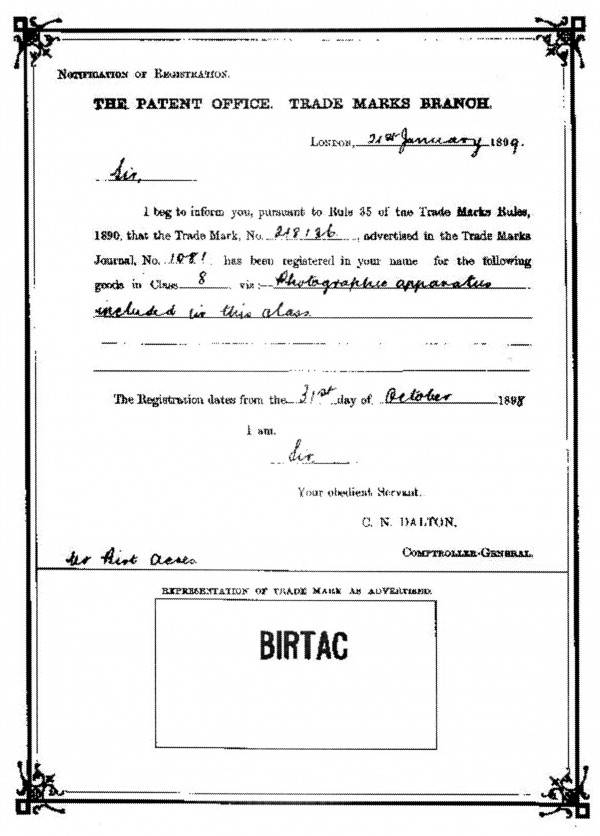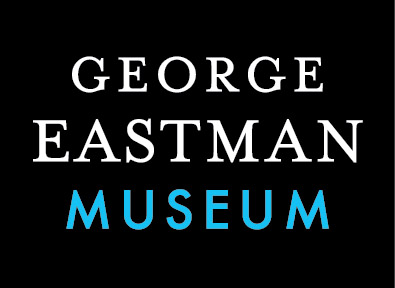Birtac(1898–c.1901)
A 17.5mm small-gauge amateur camera, printer and projector.
Film Explorer

An unidentified amateur film made using the Birtac format.Cinémathèque française, Paris, France.
Cinémathèque française, Paris, France.
Identification
12.70mm x 9.53mm (0.5 in x 0.375 in).
35mm perforations along on edge.
Beater movement.
B/W, orthochromatic. Acres made and coated his own emulsion, branded as “Birt Acres’ System”.
None
However, the recommended cranking speed was three turns per second, or approximately 9 fps.
1
12.70mm x 9.53mm (0.5 in x 0.375 in).
35mm perforations along on edge.
Beater movement.
B/W, orthochromatic. Acres made and coated his own emulsion, branded as “Birt Acres’ System”.
History
The Birtac 17.5mm film apparatus, convertible as either a camera, a printer, or a projector when patented from June 9, 1898, is frequently referred to as the first amateur moving picture device – but this is incorrect and is based on retrospective judgements from well-meaning, but sloppy historians.
In mid-1898 there was not yet a clear distinction between the ‘amateur’ and the ‘professional’ in the new moving-picture realm – indeed, there was no guarantee of any stability or longevity for this new technology. Clearly intended for amateur photographers – the cover of its manual stated unambiguously, “The ‘Birtac’ for At Home Animated Photography” – the machine designed and manufactured by Birt Acres in north London, was preceded by the Héliographe of Alexandre Sale and Elie Xavier Mazo in France; by the first model of the Pictorialograph, from J. W. Rowe and Company in London; and in Germany, by the Messter Amateur Kinematograph, which was announced for public sale in 1897. All of these manufacturers, including Acres and even the pioneering Auguste and Louis Lumière (with not only their Cinématographe, but also the Kinora), saw with clear vision the business model adopted by George Eastman when he introduced the Kodak camera in June 1888 – a camera that radically expanded the still photography market to a general public wanting to make photographs without complication. The enormous success of Kodak inspired many early cinema pioneers who wanted to replicate that achievement, driven by the growing public interest in moving pictures. Equipment manufacturers recognized that developing smaller film formats could significantly reduce the cost of raw film stock for consumers. The Birtac used 17.5mm film instead of 35mm, as did Alfred Prestwich’s La Petite Living Picture Camera and Projector, while the Héliographe and the Mirographe both used stock approximately 20mm wide. But, the widespread adoption of home movie technology was primarily hindered by the highly flammable nature of early film stock used for both camera negatives and positive prints. It wasn't until the 1910s, with the introduction of reliable non-flammable safety film, that the home market for moving pictures really began to flourish.
The Birtac camera-projector was an ingenious, lightweight and elegant design – it could be handheld and it was welcomed widely by the photographic world. Each Birtac was supplied with a plumb-line designed to oscillate three times per second, so that the proper cranking speed of three rotations per second could be maintained. Pre-filmed subjects “ready for Exhibition” in Birtac format were available from Acres in three sizes: 20 ft (7 shillings), 30 ft (10 shillings) and 40 ft (12 shillings). For amateurs wishing to develop their own films, a complete kit was available at two guineas (£2 2s), including a pegged frame onto which the negative, or positive, could be wound so that development could take place in a shallow tray measuring 10 in x 12 in (25.4cm x 30.48cm). Alternatively, Acres manufacturing arm, The Northern Photographic Works in Barnet, north London, provided a complete service, selling 20-ft (6.1m) of their 17.5mm film in a cardboard daylight-loading box, with a long black leader, for 2s 6d. Subsequent processing of the negative cost 1s 6d, with positive prints costing 4s 6d each. This was a replica of the Eastman model for the Kodak camera – with Eastman providing the roll film, processing and prints, without requiring any handling by the photographer. Although undoubtedly a sensible commercial plan, Acres’s Northern Photographic Works was underfunded by its investors and ill-prepared to service a large customer base. When the Warwick Trading Company entered the market with its own 17.5mm amateur Biokam apparatus, in May 1899, Acres slowly withdrew from the market, overtaken by a larger and more substantial commercial enterprise with the capital necessary to survive in a still reluctant, and slow-growing, marketplace.
Selected Filmography
This domestic scene is in the collection of the National Science and Media Museum in Bradford, United Kingdom.
This domestic scene is in the collection of the National Science and Media Museum in Bradford, United Kingdom.
This short reel survives in the collection of the Cinémathèque française, Paris, France.
This short reel survives in the collection of the Cinémathèque française, Paris, France.
Technology
A compact and sophisticated design, the Birtac was intended not just for amateur photographers who wished to make moving pictures, but also for neophytes lacking any photographic experience at all. Housed in a wooden case 15.2cm (5.984 in) wide by 19.8cm (7.795 in) long and 16.4cm (6.457 in) high (with viewfinder attached, 20.5cm [8.071 in] high), the apparatus was a combination camera, printer and projector – it sold for £10 10s. It used 17.5mm film, perforated on one side, with two perforations per frame, with continuously running film advanced by a beater movement driven by a small hand crank – with a recommendation for three turns per second, when shooting or projecting film; and one turn per second, when printing. The three exposure settings of the Ross lens were labelled “small”, “medium” and “large”, and their use was described in the accompanying manual, for exposure across a range of lighting conditions, taking into account both time of year and time of day.
Negative film in 20-ft (6.07m) lengths (c. 60 seconds) was supplied in a circular cardboard daylight-loading box, with long black leader. Alongside Acre’s developing service, the company supplied complete home-developing kits and the Birtac manual also supplied chemical formulas for developing and fixing solutions.
To change from camera to projection mode, the top of the case was raised and secured by a small brass lever fitted into a perforated bracket on the lid, so the positive print now ran vertically towards the works of the equipment. The camera lens was then unscrewed from the front of the case, a shutter was placed over the exposed opening. and the lens was then screwed into a short tube inside the case, but above its position in the camera and now facing towards the rear of the case. This tube was attached to a rack-and-pinion gear arrangement to allow for focusing. Fitted apertures in the case were opened behind the lens and at the opposite rear wall. A modified, incandescent Welsbach gas burner supplied with the device was then set at the aperture behind the lens: the burner used a specially designed small mantle that gave a bright light and could be fitted to the ordinary household gas supply.
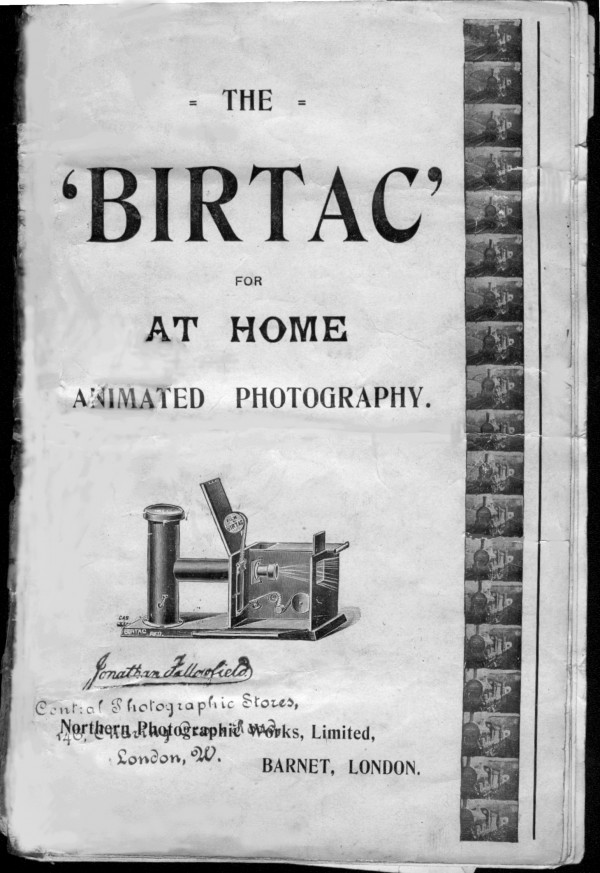
Cover of the 16-page operating manual supplied with the apparatus.
Courtesy of Stephen Herbert.
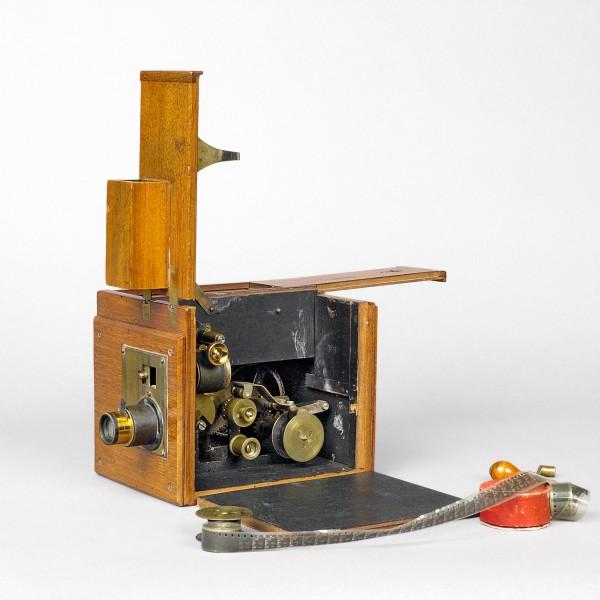
The Birtac open, with the lid raised for projection but the lens not yet moved to its interior, rear-facing position within the case.
Cinémathèque française, Paris, France.
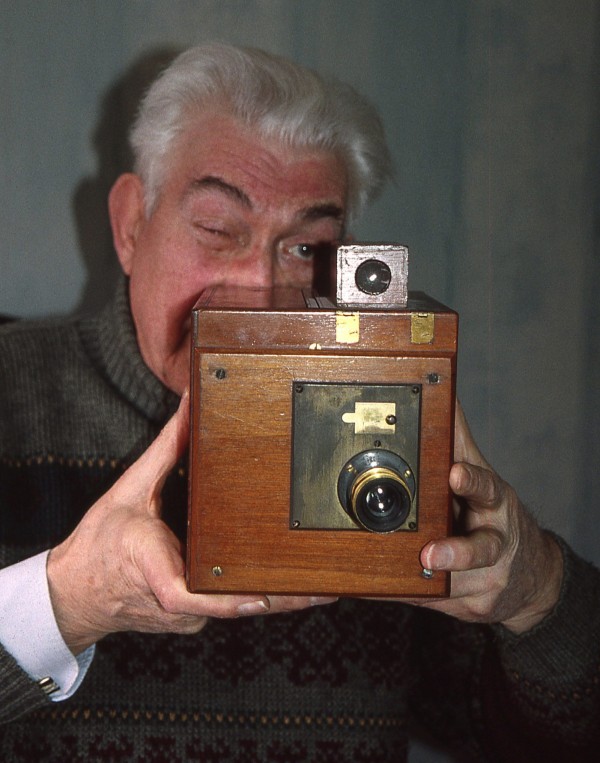
Alan Birt Acres with the Birtac camera that his grandfather designed and manufactured, c. 2006.
Photograph by Stephen Herbert.
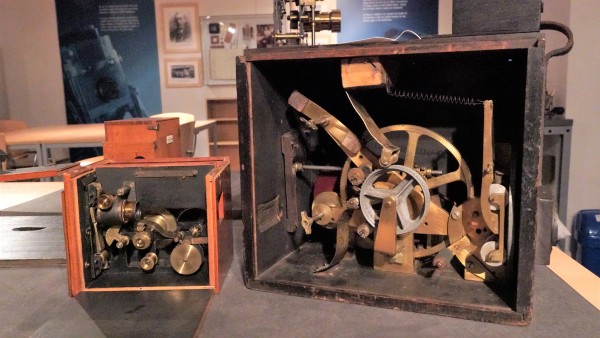
An open 17.5mm Birtac (left), next to an 1895/6 Acres 35mm moving picture camera for comparison, at the National Science and Media Museum, Bradford, United Kingdom.
Photograph by Peter Domankiewicz.
References
Ariel, Peter (1984). Ariel Cinematographica Register, Vol. 3 (Accessories/Zubehör), ACR565. Frankfurt am Main: Deutschen Filmmuseums.
Herbert, Stephen & Luke McKernan (1996). Who’s Who of Victorian Cinema. London: BFI Publishing.
Lipton, Lenny (2021). The Cinema in Flux: The Evolution of Motion Picture Technology from the Magic Lantern to the Digital Era. New York: Springer Science + Business Media.
Rossell, Deac, Barry Anthony & Peter Domankiewicz (2025). Finding Birt Acres: The Rediscovery of a Film Pioneer. Exeter: University of Exeter Press.
Patents
Acres, Birt. Improvements in Cinematographic Apparatus. UK patent 12,939, filed June 9, 1898 and issued June 2, 1899.
Related entries
Author
A student of David Shepard and James Card in the 1960s, Deac Rossell is an active independent historian of early cinema, magic lantern culture and chronophotography. Now retired from Goldsmith’s College, University of London, he has published five books – most recently Chronology of the Birth of Cinema 1833–1896 (2022) – and contributes frequently to encyclopedias, anthologies, exhibition catalogues and academic journals. He was the Curator of the Ottomar Anschütz exhibition seen at the Düsseldorf Filmmuseum and the Deutsches Filmmuseum, Frankfurt, in 2000 and 2001. His most recent book, Finding Birt Acres. The Rediscovery of a Film Pioneer, written with Barry Anthony and Peter Domankiewicz, will be published in 2025.
Peter Domankiewicz, Stephen Herbert, The Cinema Museum (London).
Rossell, Deac (2024). “Birtac”. In James Layton (ed.), Film Atlas. www.filmatlas.com. Brussels: International Federation of Film Archives / Rochester, NY: George Eastman Museum.
